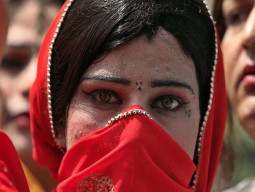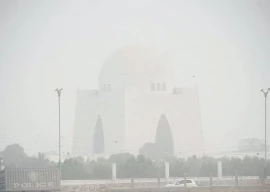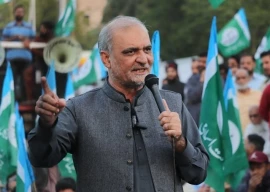
ISLAMABAD: As political parties start rejecting provisional results of the sixth population census, the Senate panel on Statistics on Tuesday proposed the government to open 1,690 census blocks to ascertain the credibility of the headcount.
The Senate Standing Committee on Statistics and Privatisation made the recommendation that there should be fresh census in 1 per cent of the total 168,943 census blocks to address the credibility issue. The Pakistan Bureau of Statistics had divided the country into 168,943 blocks for census purposes.
The meeting was held four days after Ministry of Statistics shared provisional census results with Council of Common Interests. The government consultant on census, Asif Bajwa, claimed that the CCI accepted the provisional results and did not make any adverse observation.
'Over 10 million Karachiites missing in census': MQM-P, PSP reject results
According to provisional results, Pakistan’s total population is now 207.774 million – higher by 57 per cent over the 1998 census results. Out of the total population, 52.95 per cent is living in Punjab - 2.7 per cent less than 19 years ago. About 23 per cent lives in Sindh – which is the same as of 19 years ago and cause of resentment among Sindh-based political parties.
About 5.94 per cent lives in Balochistan and is almost 1 per cent more than 19 years ago and 14.69 per cent lives in Khyber Pakhtunkhwa, which is 1.28 per cent higher than 19 years ago. The share of Fata population slightly increased 0.1 per cent to 2.41 per cent of the total population of the country.
As a result, Punjab will proportionately lose its share in federal divisible pool and seats in National Assembly. K-P and Balochistan’s shares in assembly seats and divisible pool will go up and Sindh’s shares will remain unchanged.
PPP rejects census, announces holding of APC
Due to objections raised by political parties, reputation of the Ministry of Statistics is at stake and we want to resolve this issue through sample census in 1 per cent of the total census blocks, Senator Mohsin Aziz, chairman of the standing committee, said.
The government’s consultant on census Asif Bajwa in principle agreed to the proposal but he had reservations over small sample size. He also said that the PBS cannot do the exercise without the cover of Pakistan Army.
Normally, the size of post census survey is 5 per cent, said Secretary Ministry of Statistics Rukhsana Yasmeen, which comes to around 8,447 census blocks.
The Muttahida Qaumi Movement-Pakistan on Tuesday rejected the results of the census, describing them as ‘fake’. On Monday, the Pakistan People’s Party had also rejected the census results. The Sindh government announced that it would convene an all parties’ conference on the issue. Earlier, nationalist parties in Sindh too had claimed that the province’s population had deliberately been shown less to gain political mileage.
Census 2017: Family size shrinks
Lawmakers from Fata also disputed the population reflected in the census. The transgender community has rejected the count of transgender population, which was slightly over 10,000.
Asif Bajwa said that so far no one has come up with any evidence, which may prove that the census results are incorrect. He reiterated that ensuring credibility, transparency and provision of security was the responsibility of the Pakistan Army.
The consultant on census further said that the PBS had engaged 120,000 people of local and provincial governments for conducting the exercise and they gathered the data from the field.
6th census findings: 207 million and counting
Lahore-Karachi controversy
While responding to criticism on increase in size of Lahore city in comparison to Karachi, Bajwa said that the urban population results were as per the notified urban areas by the provincial governments. He said that the Punjab government declared the whole Lahore District as Lahore city in January 2015. Because of this new demarcation, Punjab city’s population increased to 11.126 million, which was 116 per cent more than 19 years ago. The provisional results showed that not even a single soul now lives in rural Lahore and the whole population of 11.126 million lives in urban Lahore.
He said that if we compare the Lahore population on the basis of pre January 2015 demarcation, then Lahore city’s population is 8.9 million, which is 71.15 per cent higher. After fresh demarcation, from Raiwind to Wagha border, every area is part of Lahore city, said Bajwa.
Contrary to this, Bajwa said, the Sindh government did not review Karachi city’s demarcation for last many years. Bajwa said still there were 29 Mouzas and one town committee in Malir District, which falls under rural Karachi.
The Karachi city’s population is 14.91 million out of total Karachi Division population of 16.05 million.
Bajwa said that the PBS would notify final results of the population census by April 2018, which may be slightly different than provisional results. He said that there was 1.5 per cent difference between provisional and final results of 1998 census.























































COMMENTS
Comments are moderated and generally will be posted if they are on-topic and not abusive.
For more information, please see our Comments FAQ